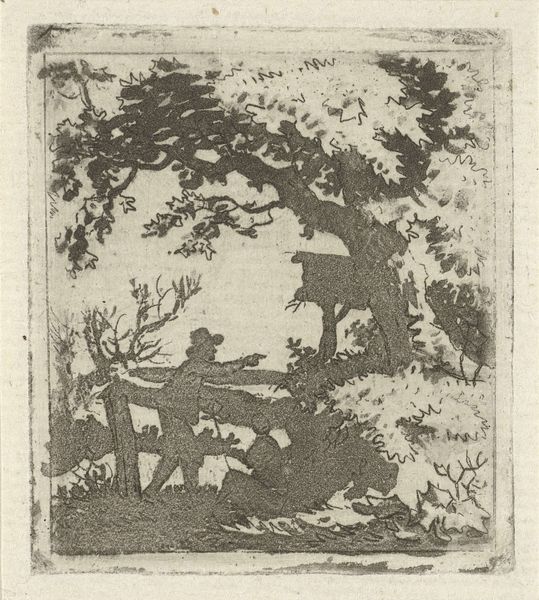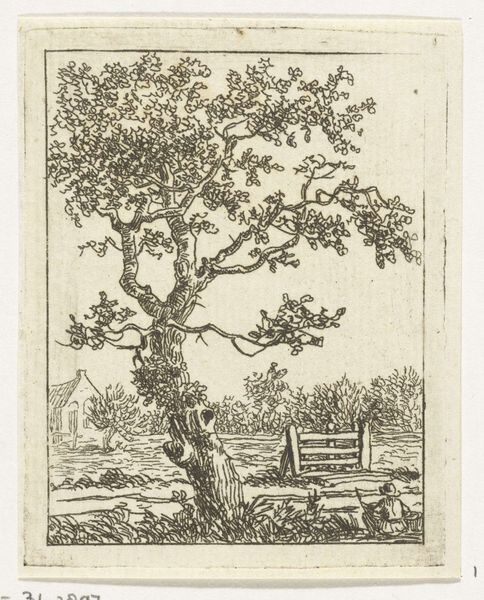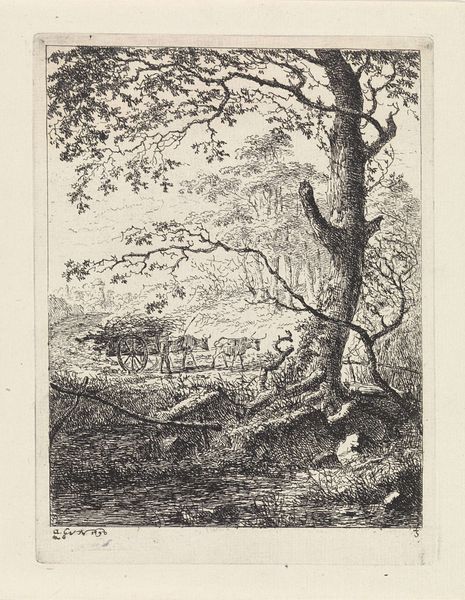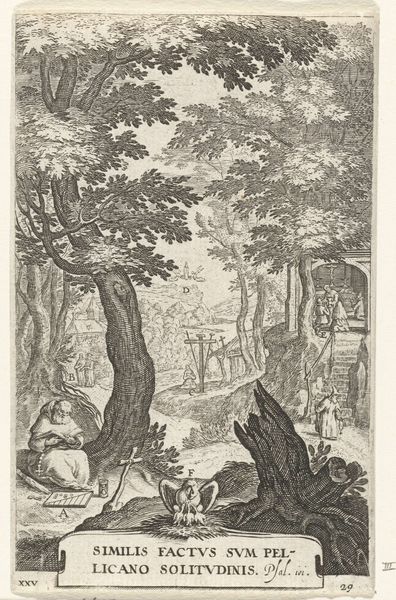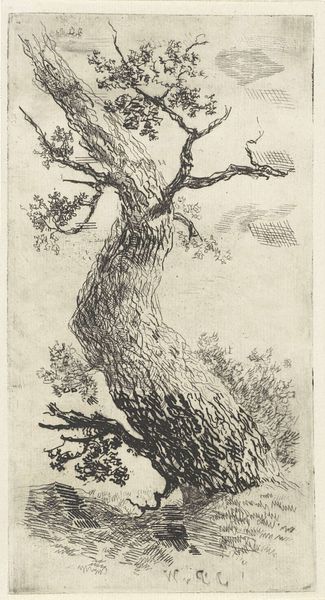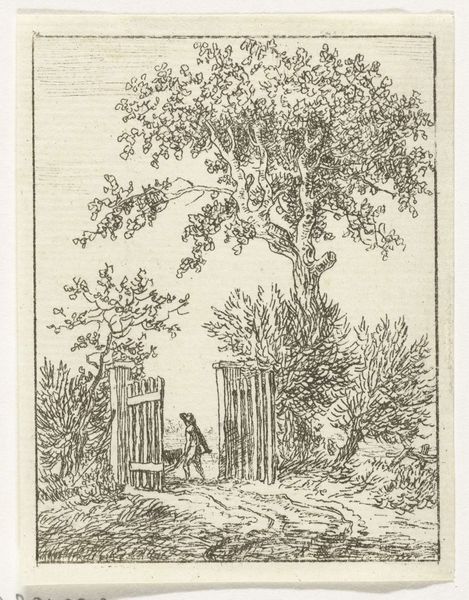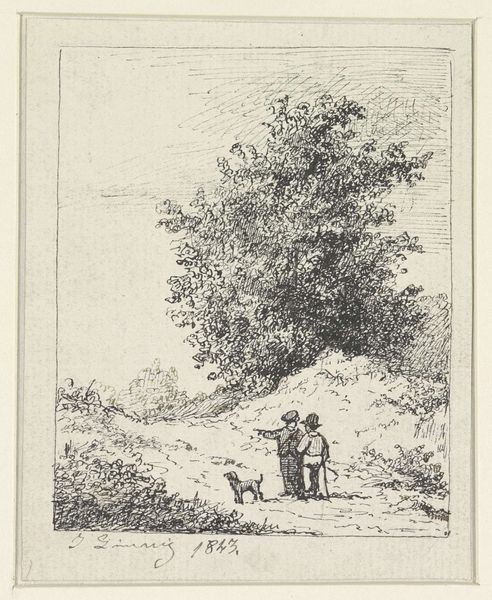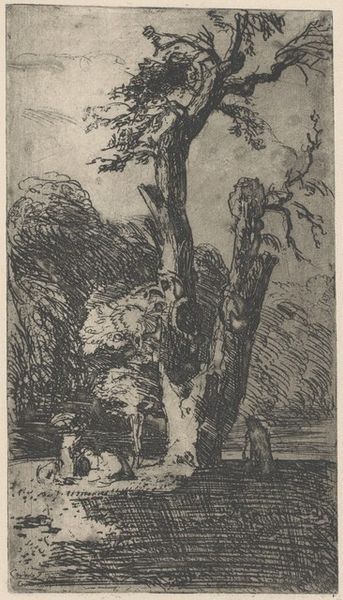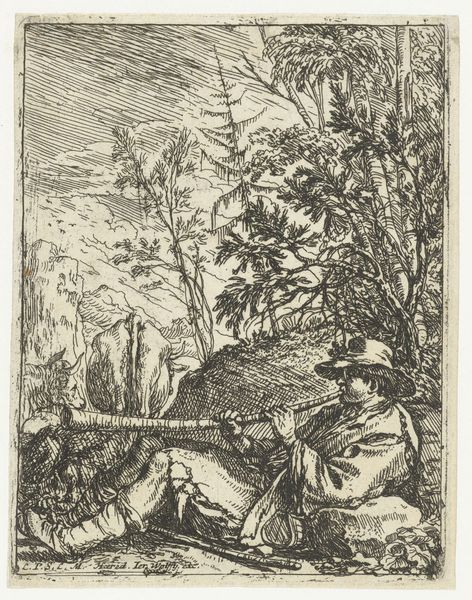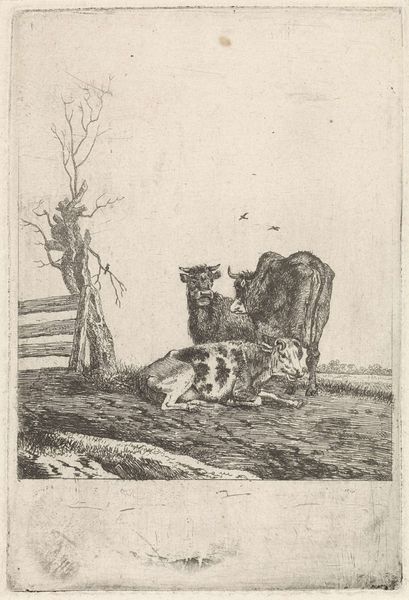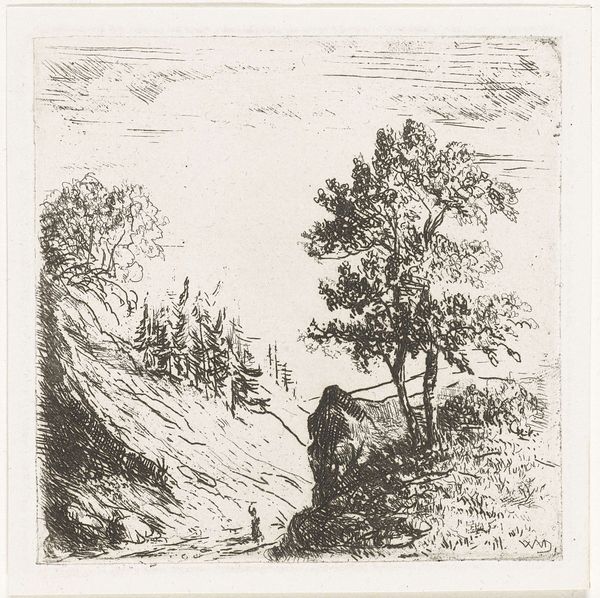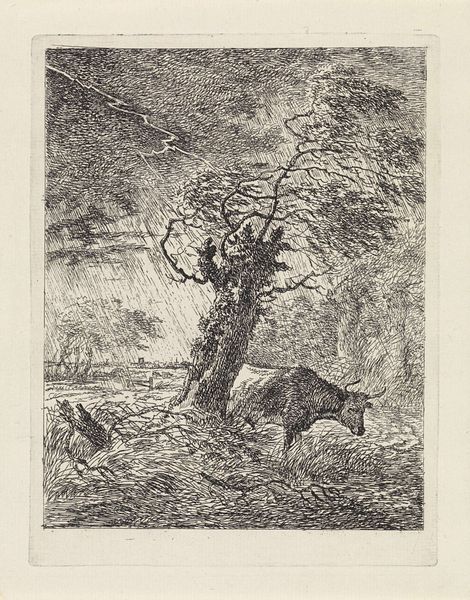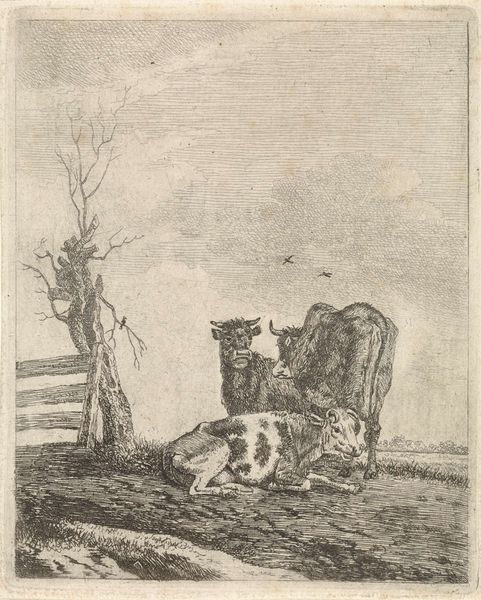
drawing, ink, pen
#
drawing
#
ink drawing
#
pen drawing
#
animal
#
dutch-golden-age
#
landscape
#
ink
#
pen
#
genre-painting
Dimensions: width 72 mm, height 121 mm
Copyright: Rijks Museum: Open Domain
Curator: Looking at this intimate Dutch Golden Age landscape brings a certain serenity, doesn’t it? Editor: It's certainly peaceful, though the high contrast ink work gives it a raw, almost stark, quality that feels distinctly un-pastoral. What can you tell us about this scene? Curator: This is "Schaap aan de voet van een wilg," or "Sheep at the Foot of a Willow," attributed to Anthonie van Borssom. Though dated quite vaguely from 1639 to 1677, it reflects the Dutch fascination with everyday life. Editor: Yes, I immediately get a sense of daily life here. You've got the sheep resting peacefully in the foreground, the gnarly tree that dominates the composition, and a glimpse of the flat Dutch landscape beyond. It is amazing that he creates so much with just pen and ink. What strikes me, though, is how the tree, old and almost anthropomorphic, is placed beside the young lamb. Is there perhaps a metaphor there? Curator: I'm fascinated by that very juxtaposition! Trees in art can represent family lineage, the circle of life, protection. Here, the willow, known for its resilience, may symbolize endurance or perhaps mourning given its weeping branches. And we find this domesticated animal, an archetype of docility and religious symbolism, right at its base. I'm tempted to read it as a meditation on cycles and generations. Editor: I find it remarkable how class and society can shape our perceptions of animals! At the time, owning land and sheep meant societal recognition and privilege. Curator: Exactly, this artwork not only gives us access to a picturesque setting, but also an implicit insight into social order during the Dutch Golden Age. One cannot help but consider the symbolic importance of domesticity. It provides viewers an invitation into the cultural ideals of its time. Editor: I agree. The deliberate positioning within a specific context provides the viewer with keys to a complex social symbolism. Considering Anthonie van Borssom's overall artistic production, I'd say it certainly invites broader perspectives of Dutch Golden Age art, extending well beyond just picturesque scenes. Curator: Absolutely, each element weaves into a compelling snapshot of cultural and personal significance. This is indeed more than just a pastoral scene; it's an intricate tapestry woven with symbols and silent stories.
Comments
No comments
Be the first to comment and join the conversation on the ultimate creative platform.
